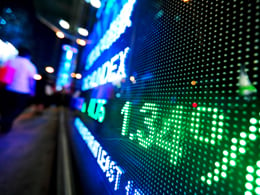 Following up on yesterday’s post about what kind of returns we can expect from bond investments, today let’s look at stocks. With the market recently bouncing off all-time highs, it seems like a good time to consider what the future holds.
Following up on yesterday’s post about what kind of returns we can expect from bond investments, today let’s look at stocks. With the market recently bouncing off all-time highs, it seems like a good time to consider what the future holds.
Are we poised for more of a run-up over the next several years, or is the market likely to disappoint in its returns?
The answer very probably depends on the time frame we look at. Over one year, it’s anybody’s guess. Over three to five years, we can probably make a reasonable estimation. And over ten years, we likely have a pretty good idea. Let’s take a look at what history tells us about returns going forward.
Selecting a valuation indicator
How do we characterize today’s market environment in relation to past market environments? There are several ways to measure the market, but the best revolve around valuation. How we measure valuation can make a significant difference in the results we get. A good indicator of market value should have a meaningful relationship with future returns. If not, what’s the point?
Looking at the correlation between different valuation measures and future returns, a couple things stand out:
- Forward price-earnings ratios have a relatively poor correlation with future returns.
- Trailing price-earnings ratios have a fairly strong relationship with future returns. This makes sense, as the trailing P/E ratio reflects actual rather than expected performance.
The valuation indicator that has the best correlation with future returns, however, is the Shiller price-earnings ratio. It's my preferred metric for several reasons, and the actual numbers bear it out. If you’re looking to estimate returns over 5 to 10 years, the Shiller P/E is the best indicator to use.
So, what does the Shiller P/E tell us about future returns?
Here's what we can expect returns to be going forward, using the Shiller P/E as an indicator.

This chart comes from an older study I did, but the numbers are still reasonably accurate. The main point is that the more expensive the market is, the lower future returns are likely to be.
With the current level at 26.3, per Shiller’s website, we can see that over the next five years, based on history, the average return may be in the 5-percent range, while the likely 10-year return may be in the 7.5-percent range.
Not too shabby, actually. As a basis for planning, this analysis constrains what we might hope for, but it doesn’t look all that bad either.
There are other factors to consider, of course. Averages can conceal a multitude of sins, so tomorrow we’ll look at the data in more detail to see what else we can divine about future stock returns.


 Print
Print

